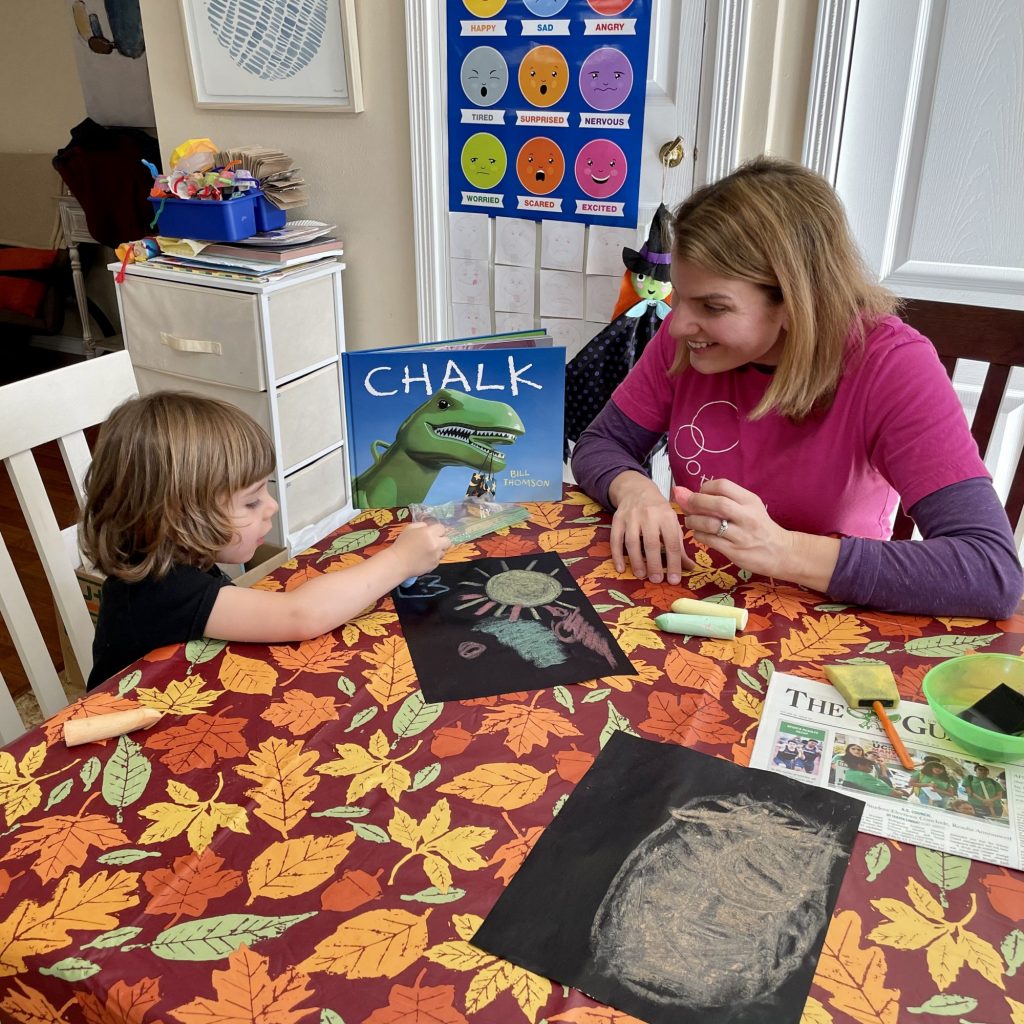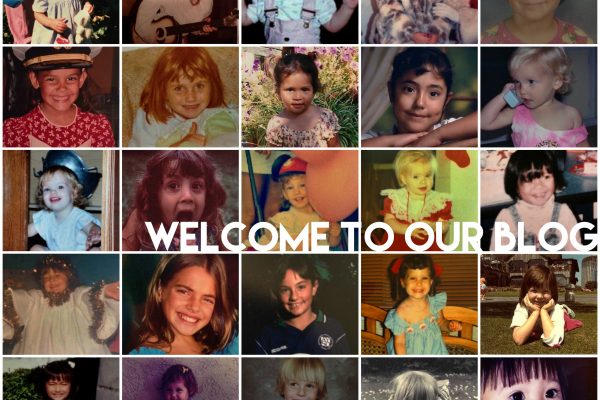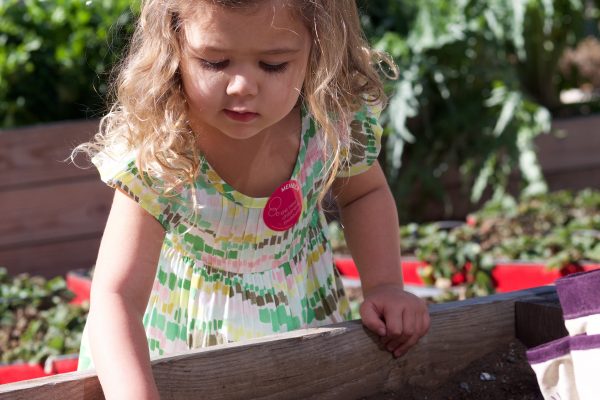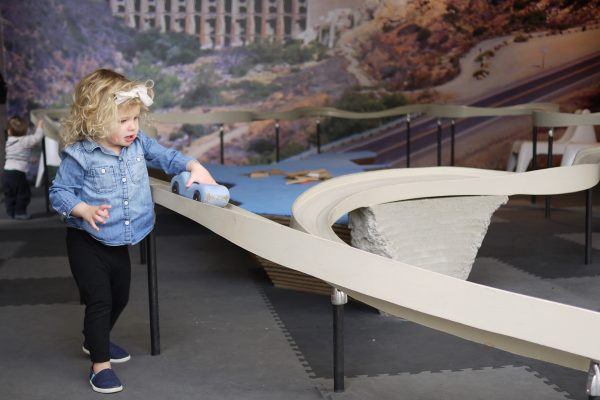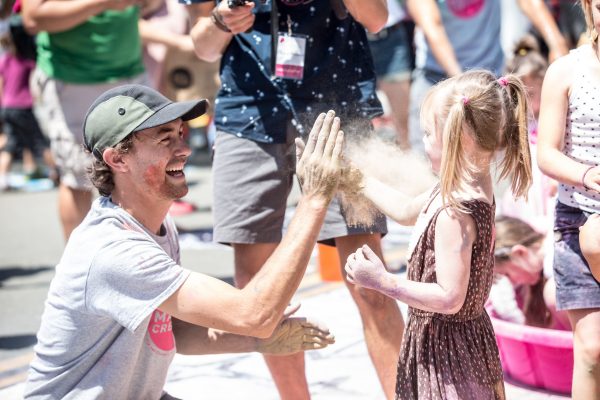As part of our ScholarShare 529 Toddler Time at Home program, celebrate the story of Chalk by Bill Thomson while also exploring a creative project alongside your early learner. Add sidewalk chalk on top of wet paper to create rich textures, lines and colors together. Retell this magical story through exploratory and imaginative art making!
directions
1. Read the book. Start by reading together Chalk by Bill Thomson. This storybook does not contain text, which invites you to interpret the story alongside your early learner, making it your own through the details you decide together. Encourage them to help you tell the story using the pictures as clues to its meaning. You can even invent dialogue between the characters (imagining what characters could be saying/feeling/thinking). Then, get ready to create art inspired by the magic of the story!
2. Gather all materials. See list above. Begin by placing the dark construction paper onto a covered table surface. Using the sponge brush, invite your early learner to dip the brush into the water and begin painting the paper with it. It’s okay to add a lot of water. Cover the entire paper with water. If doing this project with a child under the age of 3, you may need to support them with this step.
3. Paint with chalk. Place the chalk on the table and encourage your early learner to draw with it on the wet paper. Children 3 and up may be able to hold the chalk themselves, but younger ones may need you to help them hold it. Invite your early learner to explore what happens when the chalk and moistened paper meet. They can scribble, draw a picture from the story or rub the paper with the side of the chalk. If old enough, encourage them to think about what they would draw if they had magic chalk and what that drawing might do if it came to life!
4. Discuss and explore. While drawing together, talk about the story Chalk and help your early learner to make connections between it and the activity – e.g. “These puddles on our paper remind me of the puddles in the story. I wonder how they might change our chalk if we were to draw inside of them.” Encourage them to really explore what the materials do, and consider demonstrating different line types, textures made by rubbing the chalk with your fingers or adding more water on top and how colors can blend together to form new colors.
5. Dry paint and create more! Once finished exploring, which may be anywhere between 5 and 25 minutes depending on your early learner’s age and interest, set the wet drawn paper in a safe space to dry. If time allows, let them create more than one picture.
Toddler to Transitional Kindergarten Learning Connections
Early learners (ages 18 months – 5 years old) enjoy storytelling and related activities like this one that allow them to connect with what they’ve heard and seen and to get creative at the same time. This activity is also a way for early learners to explore materials and to test outcomes. To further increase the learning opportunities, talk about the story you read while creating your Wet Chalk Painting together and also consider exploring one or more of the ideas below.
Drama Time
Encourage your early learner to use their imagination through a simple drama activity. Take turns acting out ideas from the story or new ones you invent. Let them decide what they will be miming (e.g. a dinosaur walking). Then, try guessing each other’s mime. Try to model accompanying each guess with an observation or two that led you to make it.
Color Mixing
It’s never too early to teach your early learner about color and how colors are made. Talking about colors, pointing them out in their environment, using color names and exploring together with art materials on what happens when colors are combined are all great ways to introduce simple color theory to your early learner. If able, encourage them to point out the discoveries they are making.
Share a Story
Reading is a wonderful vehicle for learning and for introducing new ideas to early learners. Select any engaging and age-appropriate books that explore color, drawing or other wordless titles that allow you to story tell more together and form your own versions. Read them together with your child before or after the Wet Chalk Painting project.
Recommended Related Reading (Ages 2-5):
- Mouse Paint by Ellen Stoll Walsh
- Maybe Something Beautiful: How Art Transformed a Neighborhood by F. Isabel Compoy and Theresa Howell and illustrated by Rafael Lopez
- Float by Daniel Miyares
Preschool Learning Foundations Standards (Visual Arts, Social Emotional Learning and Literacy)
Age 48 Months:
- Create marks with crayons, paint and chalk and then identify them; mold and build with dough and clay and then identify them.
- Begin to recognize and name materials and tools used for visual arts.
- Enjoy learning and are confident in their abilities to make new discoveries although may not persist at solving difficult problems.
- Use language to construct short narratives that are real or fictional.
Age 60 Months:
- Begin to plan art and show increasing interest and persistence in completing it.
- Recognize and name materials and tools used for visual arts.
- Use language to construct extended narratives that are real or fictional.
Recommended reading and Learning Connection Activities provided in collaboration with Words Alive.
